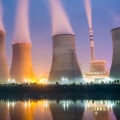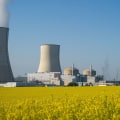Since 1951, all people have been exposed to radiation due to the consequences of nuclear weapons testing. Although scientists from the Centers for Disease Control and Prevention (CDC) and the National Cancer Institute (NCI) believe that the risk of cancer from this exposure is small for most people, those who received higher doses of radiation may be at a higher risk. Nuclear weapons tests are conducted to assess the performance, effectiveness, and explosive capacity of nuclear weapons. These tests provide valuable information on how weapons work, how detonations are affected by different conditions, and how personnel, structures, and equipment are affected when subjected to nuclear explosions.
However, nuclear tests have often been used as a symbol of scientific and military strength. Many tests have been politically motivated; most nuclear-weapon states publicly declared their nuclear status through a nuclear test. In October 1963, most countries signed and ratified the Partial Nuclear Test Ban Treaty. The iconic mushroom clouds of nuclear explosions, such as the 74-kiloton test HOOD on July 5, 1957 (detonated from a balloon at 1,500 feet altitude), are universally recognized.
From 1945 to 1992, a total of 520 atmospheric nuclear explosions (including eight underwater) were carried out with a total yield of 545 megatons. The peak occurred in 1961-1962 when the United States and the Soviet Union detonated 340 megatons in the atmosphere. During this same period, 1,352 underground nuclear weapons tests were conducted with a total yield of 90 Mt. The risk of radiation exposure depends on several factors such as age at exposure (generally, children up to 10 years old were the most at risk during atmospheric nuclear tests), location between 1951 and 1962, main diet, source of milk (since cow's milk was the main source of contamination), and amount of milk consumed (Lyon et al.).
The doses related to the consequences received as a result of the test on Bikini Atoll are the highest in the history of global nuclear tests. Other cases of intense radioactive contamination of marine ecosystems are represented by French nuclear tests conducted during 1966-1996 in French Polynesia in the atolls of Moruroa and Fangataufa in the southeastern part of the Tuamotu-Gambier archipelago. Nuclear tests were usually conducted in remote locations at least 100 kilometers away from human populations. Some radioactive dust in the southern part of the Semipalatinsk region accumulated between 1964 and 1981 was likely due to nuclear weapons tests conducted by China in Lop Nur.
By the 1950s, however, the United States had established its own dedicated test site (Nevada Test Site) and was also using a site in the Marshall Islands (Pacific Proving Grounds) to conduct extensive atomic and nuclear tests. From 1966 to 1974, France exploded 41 nuclear weapons in aerial tests in French Polynesia. The United States is one example of evaluating the correlation between increased incidence rate of thyroid cancer and continent-scale radioactive contamination with 131I, a radioactive isotope released in large quantities during nuclear tests conducted at major test sites such as Nevada. Radionuclides with long half-lives are still present in the environment but at relatively low levels of activity according to a DOE-NV publication entitled “A Perspective on Atmospheric Nuclear Tests in Nevada”. There may also have been at least three suspected but unrecognized nuclear explosions (see list of alleged nuclear tests), including the Vela Incident.
The 1962 Sedan test was a United States experiment in which nuclear weapons were used to excavate large quantities of earth.






